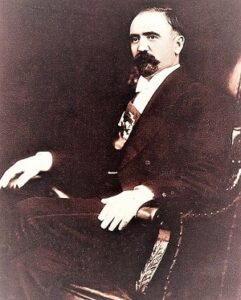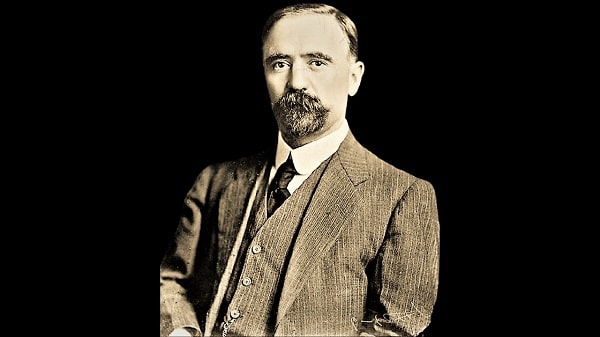Francisco I. Madero full name Francisco Ignacio Madero González (Born on 30 October 1873 – Died on 22 February 1913) was a Mexican revolutionary, businessman, and the 37th President of Mexico from 1911 until shortly before his assassination in 1913.
A wealthy landowner, he nevertheless became a champion of social justice and democracy. Madero was notable for challenging longtime President Porfirio Díaz to the presidency in 1910 and for being instrumental in triggering the Mexican Revolution.
In 1913, he was betrayed and assassinated along with Vice President José María Pino Suárez, as a result of a military coup (so-called Tragic Ten) sponsored by Victoriano Huerta.

Facts About Francisco I. Madero
- Born: 30 October 1873, Parras de la Fuente, Coahuila, Mexico
- Full name: Francisco Ignacio Madero González
- Profession: Businessman, writer, revolutionary
- In-office: 9 November 1911 – 19 February 1913
- Nationality: Mexican
- Political party: Progressive Constitutionalist Party (previously Anti-Reelectionist Party)
- Residence: Coahuila
- Spouse(s): Sara Pérez, no children
- Father: Francisco Madero Hernández
- Mother: Mercedes González Treviño
- Died: 22 February 1913 (aged 39), Mexico City, Mexico
- Cause of death: Assassination
- Burial: Monument to the Revolution, Mexico City, Mexico
Francisco I. Madero Early Life
Francisco I. Madero was born in the hacienda of El Rosario, in Parras de la Fuente, Coahuila on October 30, 1873, as the elder son of Francisco Madero Hernández and Mercedes González Treviño. The Madero family was one of the richest personal in the Mexico.
He received a careful education with the Jesuits, then went to study in Baltimore, at HEC (international business school) in Paris, after completing his secondary cycle at Lycée Hoche in Versailles and agriculture at the University of California at Berkeley, he also studied banking in Culver Academies in Indiana.
Coming from a family of extremely wealthy entrepreneurs close to the dignitaries of the Porfirio Díaz regime, he wanted to bring democracy to Mexico, but without upsetting the executives of society; he believed that democracy would by itself and over time improve living conditions for all Mexicans.
In 1905 he unsuccessfully presented his candidacy for governor of the state of Coahuila. In January 1909, after overcoming his father’s initial disapproval, he published a book called The Presidential Succession of 1910, which had an unexpected impact.
Its slogan was the same as that of Díaz in its beginnings: effective suffrage and no re-election. Fighting against the government of Porfirio Díaz, who, constantly re-elected, had governed the country since 1876, he created the National Anti-Re-election Party on May 22, 1909, and presented his candidacy in the elections of 1910.
Accused of fomenting an armed insurrection, he was arrested on June 16, 1910, and imprisoned in San Luis Potosí. After escaping from prison, he took refuge in the United States and proclaimed there the San Luis plan that started the Mexican revolution.
The Mexican Revolution
The Mexican Revolution was started in 1910 to end the military dictatorship of President Porfirio Díaz to forced him to exile. After Porfirio Díaz resigned as President on May 25, 1911, after signing the Treaty of Ciudad Juárez, Francisco I. Madero became the country’s highest political leader known as the “Maderism”.
Madero’s followers called him “caudillo de la Revolución” (the leader of the Revolution). He was elected president on October 15, 1911, by almost 90% of the vote. Taking office on November 6, 1911, he became one of Mexico’s youngest presidents just turning 38 years old.
Despite its widespread popularity, Madero’s administration soon encountered opposition from radical revolutionaries and remnants of the old regime. The deaths of Madero and José María Pino Suárez led to a national and international backlash that eventually paved the way for the fall of the Victoriano Huerta Dictatorship, and the victory of the Mexican Revolution.

